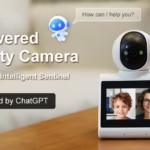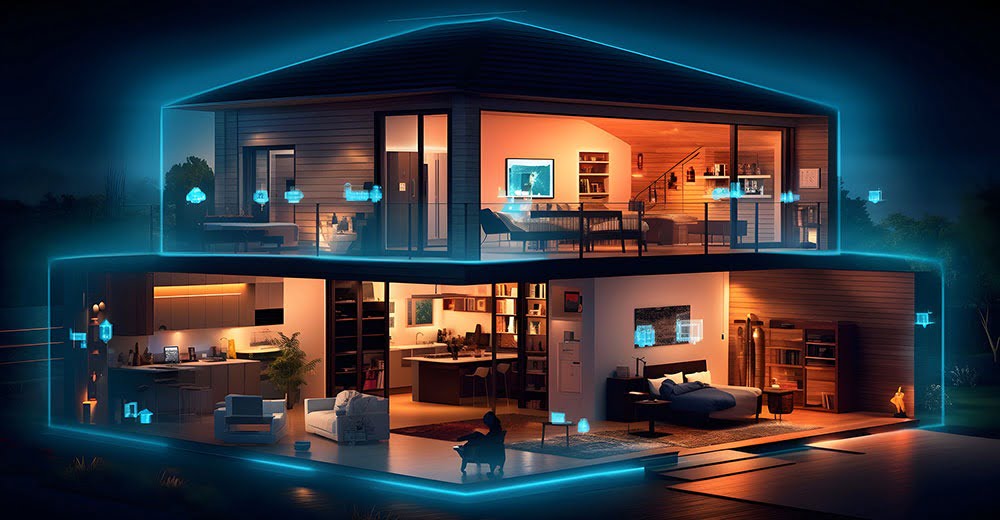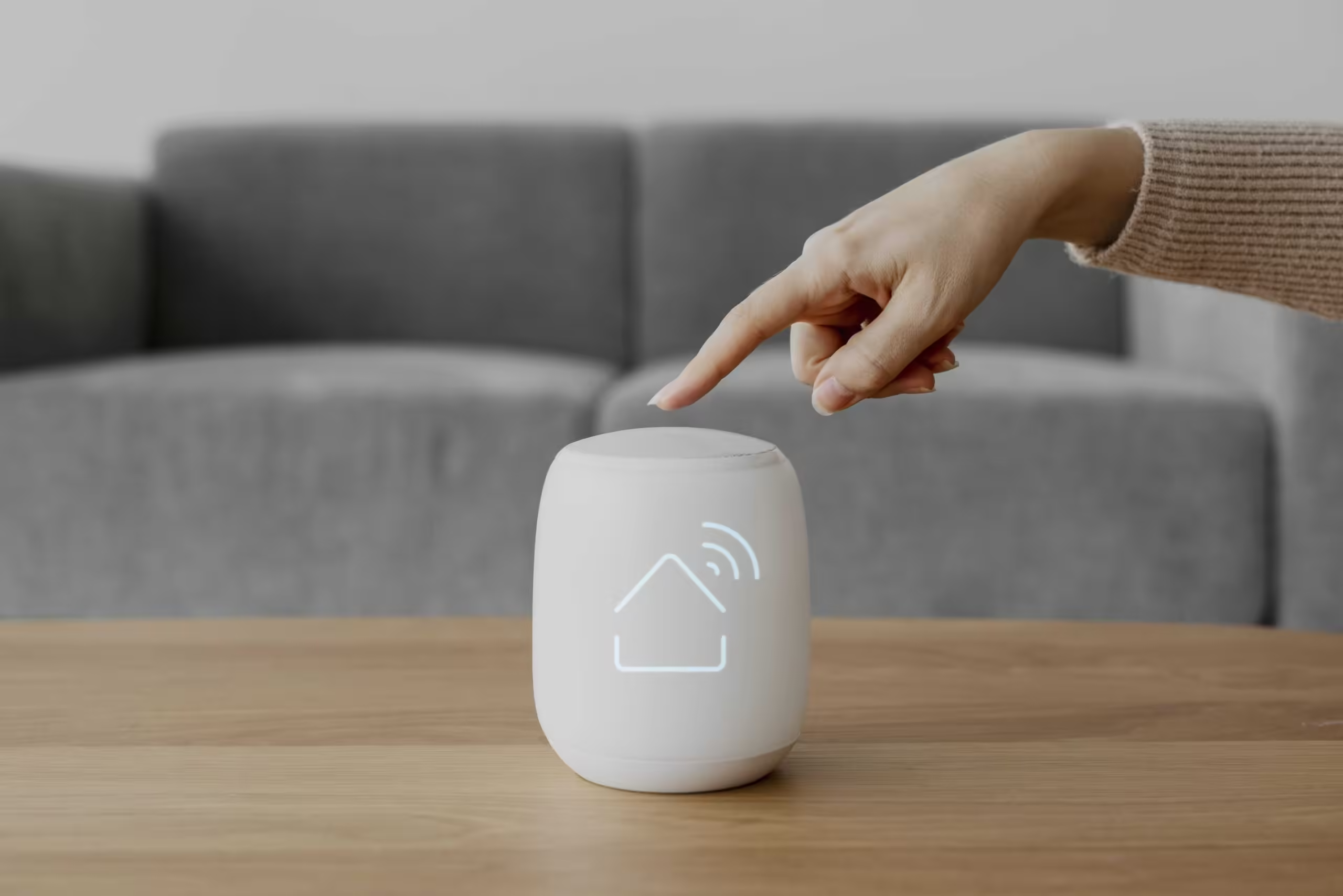The Rise of Unstoppable AI-Powered Smart Homes: Trends Shaping the Future

Estimated reading time: 7 minutes
Key Takeaways
- Unstoppable AI-Powered Smart Homes integrate AI, IoT, and machine learning for adaptive, self-improving home environments.
- These systems enhance convenience, energy efficiency, and security by learning user habits and predicting needs.
- Key trends include hyper-personalization, advanced voice control, and self-optimizing AI-powered IoT devices.
- AI acts as the central brain, enabling seamless communication and decision-making between connected devices (ecosystem synergy).
- Edge computing allows for faster, more private local processing of AI tasks like facial recognition.
- Challenges like cost, interoperability between different brands, and privacy concerns still need addressing.
- The future points towards ambient computing, where technology operates silently in the background.
Table of Contents
- Introduction
- Understanding Smart Home Automation Evolution
- What Is Smart Home Automation?
- From Basic Controls to AI-Driven Systems
- Key Technologies Behind the Shift
- Key Trends Driving Unstoppable AI-Powered Smart Homes
- Trend 1: Hyper-Personalization
- Trend 2: Voice-Controlled Home Assistants
- Trend 3: AI-Powered IoT Devices
- The Role of AI in IoT Integration
- Ecosystem Synergy
- Edge Computing
- Future of Home Automation: Predictions and Innovations
- Ambient Computing
- Challenges and Considerations
- Cost Barriers
- Interoperability Issues
- Conclusion
- Frequently Asked Questions
Introduction
Imagine walking into a home that anticipates your needs before you even voice them. This isn’t science fiction anymore. Unstoppable AI-powered smart homes are rapidly becoming a reality, fundamentally changing the way we interact with our living spaces. By combining the intelligence of artificial intelligence (AI) with the connectivity of the Internet of Things (IoT) and the learning capabilities of machine learning, these homes create environments that are not just automated, but truly adaptive and self-improving.
Think about lights that subtly adjust their brightness and color temperature based on the time of day and your current activity, thermostats that intuitively learn your family’s schedule to optimize comfort and energy savings, or security systems sophisticated enough to differentiate between a delivery driver, a stray cat, and a potential threat. These aren’t isolated gadgets; they are interconnected components of an intelligent ecosystem designed around you.
The practical benefits are already being felt. A significant 63% of homeowners using smart home tech report noticeable improvements in energy efficiency and daily convenience. But what makes these systems “unstoppable”? It’s the relentless advancement of AI, its ability to learn, adapt, and integrate more deeply into every facet of home management, creating a seamless and increasingly indispensable experience. Let’s explore how AI is redefining our routines and what trends are propelling this technological revolution forward.
Understanding Smart Home Automation Evolution
What Is Smart Home Automation?
At its core, smart home automation involves connecting various household devices—like sensors, cameras, lights, locks, thermostats, and smart speakers—to the internet and enabling them to communicate with each other and be controlled remotely or automatically. Think of it as creating a digital nervous system for your home. AI elevates this concept by adding a layer of intelligence, allowing the system not just to follow commands, but to make decisions, learn preferences, and automate tasks proactively based on data and context. For those new to this concept, setting up a basic system can be straightforward. Our guide on Smart Home: Getting Started with Your Journey offers practical steps for beginners.
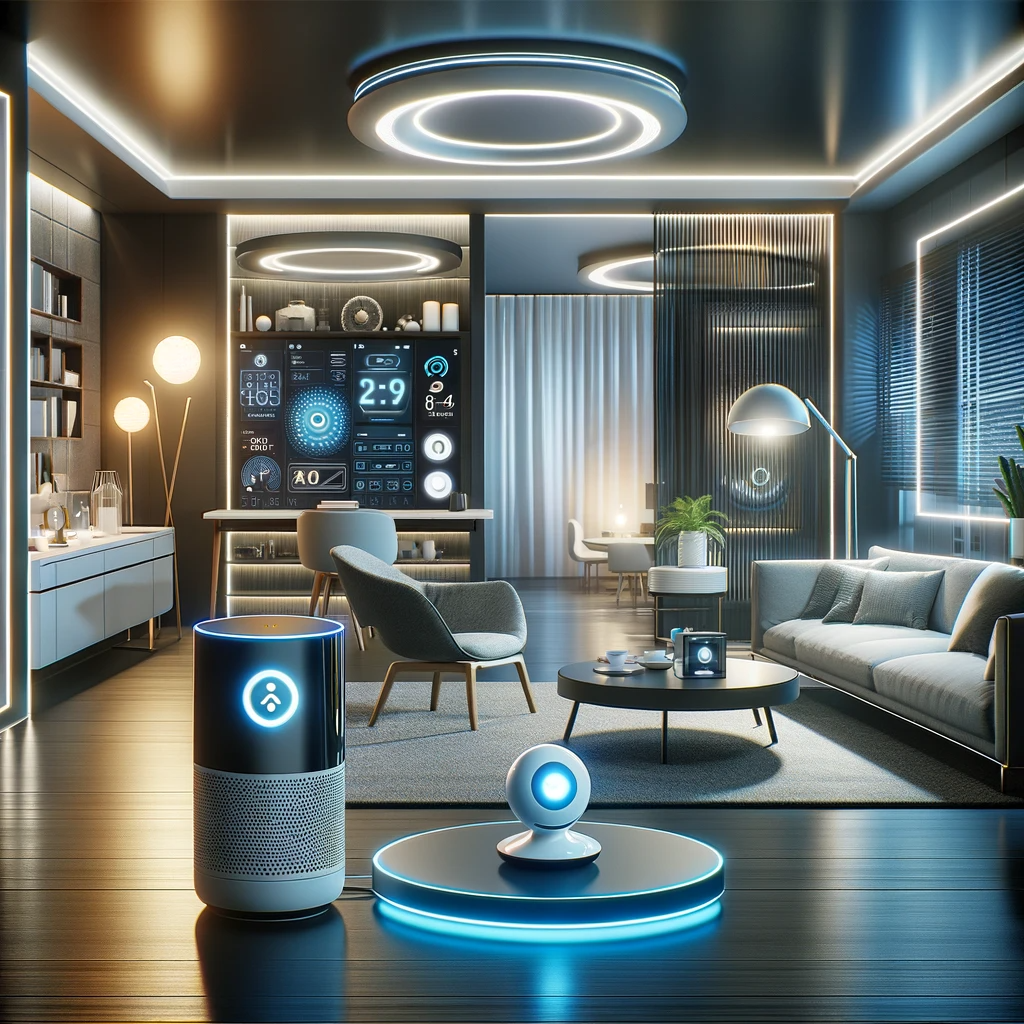
From Basic Controls to AI-Driven Systems
The journey to today’s AI-powered homes has been evolutionary:
-
- Early Days (1990s Tech): Initial smart home concepts revolved around basic remote controls and pre-programmed timers. Technologies like X10 allowed limited control over lights and appliances via existing electrical wiring, but lacked flexibility and intelligence. Think clunky interfaces and simple on/off schedules.
-
- Connected Devices (2000s-2010s): The rise of smartphones and reliable Wi-Fi brought app-controlled devices. You could turn lights on/off remotely or adjust the thermostat from your phone, but these devices operated mostly in isolation. Automation required setting up complex “if-this-then-that” rules manually.
- Modern AI Integration (Present): Today’s systems leverage sophisticated AI algorithms and machine learning. They don’t just follow rules; they learn from user behaviour, sensor data (like occupancy, ambient light, temperature), and even external information (like weather forecasts). For instance, the Nest thermostat, a pioneer in this space, analyzes your daily routines to create optimized heating and cooling schedules automatically, potentially cutting energy costs by up to 15% without sacrificing comfort. This learning capability is what truly distinguishes AI-driven systems.

Key Technologies Behind the Shift
Several key technologies converge to enable unstoppable AI-powered smart homes:
-
- IoT Devices: The foundation is a network of sensors and actuators. Motion sensors detect presence, smart locks control access, environmental sensors monitor air quality and temperature, cameras provide visual data, and voice assistants like Alexa and Google Assistant act as intuitive interfaces. These devices continuously collect real-time data about the home environment and its occupants. Considering an upgrade? Check out the 10 Must Have Smart Home Devices to enhance your setup.
-
- Cloud Computing & Big Data: Vast amounts of data generated by IoT devices are often processed and analyzed in the cloud, where powerful AI algorithms reside. This allows for complex pattern recognition and learning across many users and scenarios.
-
- Machine Learning & Predictive Analytics: This is where the “intelligence” happens. AI algorithms analyze the collected data to learn patterns, predict future events, and make proactive decisions. For example, AI can analyze vibration patterns in your HVAC system to predict a potential failure *before* it occurs, alerting you to schedule maintenance and avoid unexpected breakdowns.
- Improved Connectivity: Faster and more reliable wireless protocols like Wi-Fi 6, Zigbee, Z-Wave, and Thread ensure seamless communication between numerous devices without overwhelming your home network.

Key Trends Driving Unstoppable AI-Powered Smart Homes
Trend 1: Hyper-Personalization
AI excels at learning individual preferences and routines, tailoring the home environment to unique needs. This goes far beyond simple automation:
-
- Adaptive Lighting: Systems like Philips Hue can utilize AI to sync lighting with your body’s natural circadian rhythms. Imagine waking up to gradually brightening, cool-toned light that mimics sunrise, transitioning to brighter light during the day for focus, and shifting to warm, dim light in the evening to promote relaxation and sleep. The system learns which “scenes” you prefer for different activities like reading, cooking, or watching movies.
-
- Personalized Climate Control: AI thermostats learn not just your schedule, but also your temperature preferences for different times and activities, factoring in external weather conditions and even anticipating when you’re heading home based on your phone’s location.
- Customized Soundscapes and Entertainment: Your AI assistant can learn your music tastes and create personalized playlists for different moods or times of day – perhaps calming ambient sounds during your evening relaxation hour or an upbeat workout mix when fitness equipment sensors detect activity. It can also learn viewing habits to suggest relevant content on smart TVs.

Trend 2: Voice-Controlled Home Assistants
Voice interaction is becoming the primary way many users manage their smart homes. Advancements in Natural Language Processing (NLP) are making these interactions increasingly intuitive and powerful:
-
- Enhanced Context Awareness: Early voice commands were literal. Now, AI provides context. If you’re in the kitchen and say, “Turn off the lights,” the system understands you mean the kitchen lights, not all lights in the house. Assistants can also handle follow-up questions and more complex, conversational commands like, “Dim the living room lights to 40% and play my ‘Chill Evening’ playlist.” Want to see a central controller in action? Read our Review: Google Nest Hub – The Ultimate Smart Home Controller.
-
- Proactive Assistance: Instead of just reacting, AI assistants can proactively offer suggestions or take action. For example, “I notice you usually turn down the heat at 10 PM. Would you like me to do that now?”
- Greater Accessibility: Voice control offers unparalleled accessibility, empowering individuals with mobility limitations or visual impairments to manage their home environment effortlessly using only their voice.

Trend 3: AI-Powered IoT Devices
Individual devices are becoming smarter, capable of optimizing their own functions using embedded AI, often without needing constant commands:
-
- Self-Optimizing Thermostats: Beyond learning schedules, advanced models like Ecobee (some claiming up to 20-23% energy savings) use AI along with remote sensors to understand occupancy in different rooms, adjusting heating/cooling for maximum efficiency and comfort only where needed. They factor in humidity and weather forecasts for finer control.
-
- Intelligent Security Cameras: AI allows cameras to perform sophisticated image analysis locally or in the cloud. They can distinguish between people, pets, vehicles, and packages, drastically reducing false alarms triggered by rustling leaves or passing animals. Some offer facial recognition to identify familiar faces.
- Smart Appliances: AI-powered refrigerators can track inventory, suggest recipes based on available ingredients, and alert you when you’re running low on milk. Smart ovens can identify the food placed inside and automatically set the optimal cooking mode and time. Washing machines can detect fabric types and load size to choose the most efficient cycle.

The Role of AI in IoT Integration
Ecosystem Synergy
The true magic of an AI-powered smart home lies in how AI enables different IoT devices to work together seamlessly, creating a cohesive and intelligent ecosystem. AI acts as the central coordinator, processing data from various sensors and making decisions that trigger actions across multiple devices:
-
- Example Scenario: Your AI detects via outdoor temperature sensors and weather data that a heatwave is starting. It automatically closes smart blinds on sun-facing windows to block solar heat gain. Simultaneously, it adjusts the smart thermostat preemptively to maintain a comfortable indoor temperature efficiently, perhaps even turning on ceiling fans in occupied rooms. This coordinated response, driven by AI analysing multiple data points, is far more effective than individual devices acting alone. Understanding how this integration works is key; explore more about AI in Smart Home Devices to see how they interconnect.
- Learning Across Devices: AI can correlate data from different sources. For instance, if you consistently turn up the thermostat shortly after smart lights are dimmed in the evening, the AI might learn this pattern and automatically make a slight temperature adjustment when you activate your “movie night” lighting scene.

Edge Computing
While cloud AI is powerful, there’s a growing trend towards performing more AI processing directly on the device or a local hub within the home. This is known as edge computing:
-
- Reduced Latency: Processing data locally eliminates the delay of sending data to the cloud and waiting for a response. This is critical for real-time applications like facial recognition on smart doorbells – you want an instant response when someone approaches your door, not a delay of several seconds.
-
- Improved Privacy & Security: Keeping sensitive data, like camera feeds or voice commands, within the home network reduces exposure to potential cloud breaches and addresses user privacy concerns. AI processing happens locally, and only essential alerts or anonymized data might be sent externally.
- Enhanced Reliability: Edge AI can continue functioning even if the internet connection goes down, ensuring basic smart home operations remain available.

Future of Home Automation: Predictions and Innovations
Ambient Computing
The ultimate goal is for the technology to fade into the background, creating an environment where AI anticipates and acts on your needs almost invisibly. This is the concept of ambient computing:
-
- Invisible Integration: Instead of actively managing devices, the home environment intelligently adapts around you. Sensors embedded in walls or furniture detect presence and activity, adjusting lighting, temperature, and even entertainment automatically.
-
- Proactive Assistance Examples: Your smart home AI might notice a dinner party scheduled in your digital calendar. Based on the number of guests and the menu (perhaps accessed via a connected recipe app), it could automatically preheat the oven to the correct temperature at the right time, adjust dining room lighting, and perhaps even start a suitable background music playlist as guests are expected to arrive.
- Health Monitoring Integration: Future smart homes could integrate with wearable health trackers or non-invasive sensors to monitor well-being, perhaps adjusting air quality if breathing issues are detected or subtly changing lighting to influence mood or energy levels.
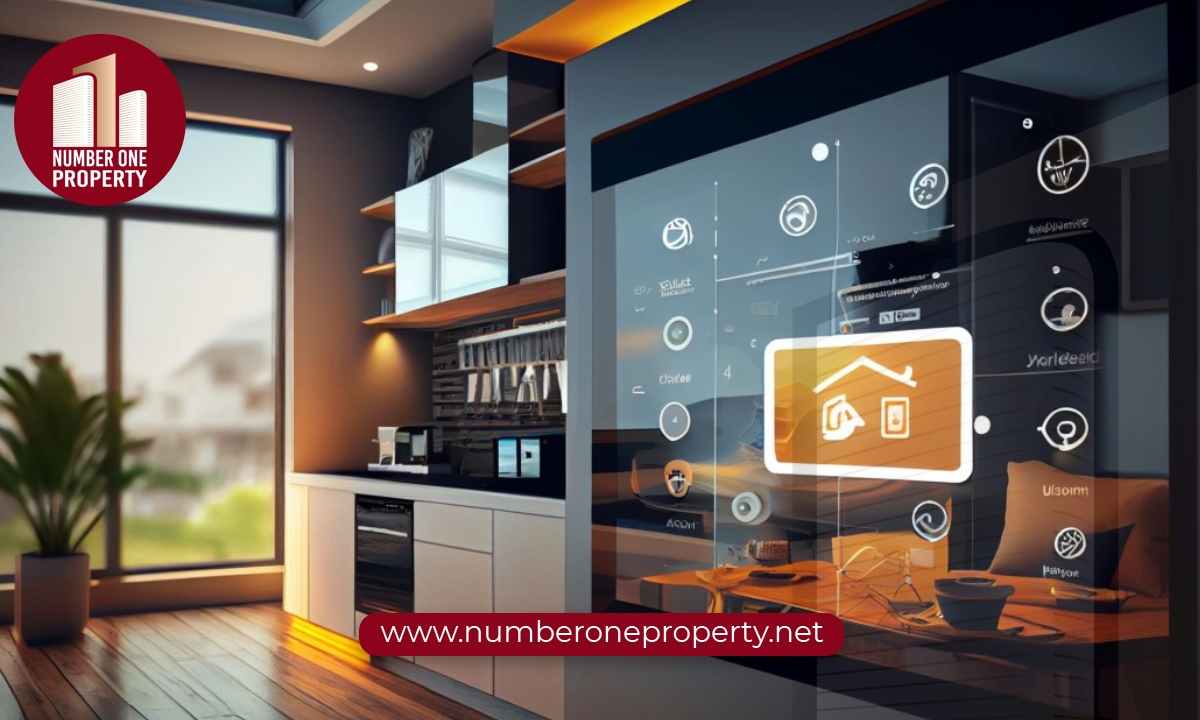
Challenges and Considerations
Despite the rapid advancements, several hurdles remain for widespread adoption of unstoppable AI-powered smart homes:
Cost Barriers
Building a comprehensive AI-powered smart home can be expensive. While basic starter kits are becoming more affordable, high-end intelligent devices carry premium price tags:
-
- Device Costs: Individual components add up. Smart thermostats can cost $150-$250, AI-powered security cameras $100-$300+ each, smart locks $150-$300, and advanced appliances like smart refrigerators can easily exceed $2000-$3000, not merely $300+.
- Installation and Integration: While some devices are DIY-friendly, complex setups involving wiring or integrating systems from different manufacturers might require professional installation, adding to the overall cost. Fortunately, budget-conscious consumers can still participate; discover tips in How to Shop for Tech Gadgets on a Budget.
Interoperability Issues
The smart home market is fragmented, with many manufacturers creating devices that work within their own closed ecosystems but don’t easily communicate with devices from other brands:
-
- Compatibility Headaches: Getting your Apple HomeKit-compatible thermostat to “talk” to your Google Nest speakers or your Samsung SmartThings sensor to trigger an Amazon Alexa routine can be challenging or impossible without complex workarounds or third-party hubs.
- The Promise of Standards: Initiatives like the Matter standard aim to address this by creating a unified protocol that allows devices from different manufacturers to work together seamlessly. However, adoption is still ongoing, and legacy devices may not be compatible.
Other significant considerations include:
-
- Data Privacy and Security: AI-powered homes collect vast amounts of personal data about occupants’ habits and routines. Ensuring this data is collected ethically, stored securely, and protected from unauthorized access or misuse is paramount. Concerns about surveillance and potential data breaches remain significant barriers for some consumers.
-
- Complexity and User Experience: While aiming for simplicity, setting up and managing a multi-device smart home can still be complex for non-technical users. Ensuring intuitive interfaces and reliable performance is crucial for user satisfaction.
- Reliability and Maintenance: Dependence on technology means system failures, software bugs, or loss of internet connectivity can disrupt home functions. Ensuring robust performance and providing clear troubleshooting paths are essential.
Conclusion
The trajectory is clear: unstoppable AI-powered smart homes are poised to become the norm rather than the exception. With projections suggesting 75% of households could adopt these technologies by 2030, the momentum is undeniable. Understanding this journey requires looking back at The Evolution of Smart Home Technology to appreciate how far we’ve come from simple timers to sophisticated, learning ecosystems.
While challenges surrounding cost, interoperability, and privacy must be continuously addressed by the industry, the benefits of hyper-personalized comfort, enhanced security, and significant energy savings driven by AI are compelling. The relentless innovation in AI-powered IoT devices, voice control, and the move towards ambient computing promises a future where our homes truly understand and cater to our needs, often before we even realize them ourselves. Staying informed about these trends and advocating for ethical AI practices will be key as we embrace this transformative era of home living.
Frequently Asked Questions
Q1: What exactly makes an AI-powered smart home “unstoppable”?
The term “unstoppable” refers to the continuous learning, adaptation, and integration capabilities driven by AI. Unlike static automation systems, AI allows smart homes to constantly improve their performance based on user behavior, environmental changes, and data from interconnected devices. This relentless evolution and deepening integration into daily life make the trend itself seem technologically unstoppable and increasingly indispensable to users.
Q2: How does AI improve energy efficiency in smart homes?
AI improves energy efficiency primarily through intelligent climate control (learning optimal heating/cooling schedules based on occupancy and preferences), smart lighting (adjusting brightness based on ambient light and occupancy, using energy-saving scenes), and managing appliance usage (e.g., running high-consumption appliances during off-peak hours). By analyzing patterns and predicting needs accurately, AI minimizes energy waste without sacrificing comfort or convenience.
Q3: Are there privacy concerns with AI-powered smart homes?
Yes, privacy is a significant concern. These systems collect vast amounts of data about personal habits, conversations (via voice assistants), and presence (via cameras/sensors). Concerns include potential unauthorized access to this data (hacking), misuse by companies for marketing or other purposes, and the general feeling of being constantly monitored. Choosing reputable brands with strong privacy policies, utilizing edge computing where possible, and managing permissions carefully are important steps to mitigate these risks.
Q4: What’s the difference between standard smart home automation and AI-powered systems?
Standard smart home automation typically relies on pre-programmed rules, schedules, and direct user commands (e.g., “If motion is detected, turn on light”). AI-powered systems go beyond this by incorporating machine learning. They can *learn* user preferences, *predict* needs, *adapt* to changing conditions automatically, and enable *coordinated actions* across multiple devices based on complex data analysis, making the automation more intuitive, efficient, and personalized.
Q5: How can I start building my own AI-powered smart home?
Start small and focus on a specific need. A good entry point is often a smart speaker (like Google Nest or Amazon Echo) combined with a smart thermostat (like Nest or Ecobee) or smart lighting (like Philips Hue). These devices offer immediate benefits and introduce you to AI learning capabilities. Ensure the devices you choose are compatible with your preferred ecosystem (e.g., Google Home, Amazon Alexa, Apple HomeKit) or support interoperability standards like Matter. You can gradually expand your system by adding more devices like smart plugs, cameras, or locks as needed. Resources like our beginner’s guide can be helpful.




